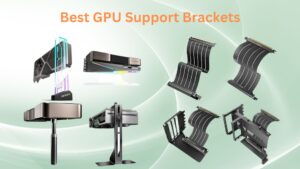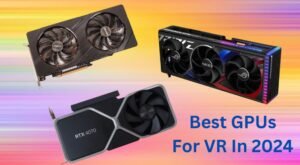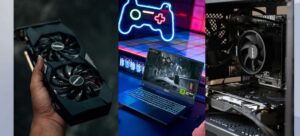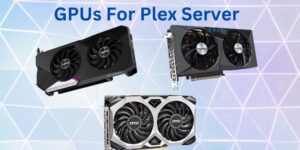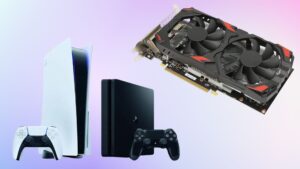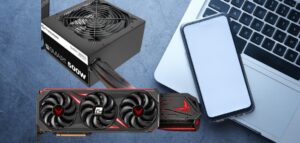Which GPU is Best For Video Editing: A Comprehensive Guide
Video editing has become an integral part of many industries, including filmmaking, advertising, content creation, and more. With the increasing demand for high-quality videos, the need for powerful hardware, including GPUs (Graphics Processing Units), has also grown significantly. Choosing the right GPU for video editing can significantly impact productivity, efficiency, and the overall quality of the final output. In this comprehensive guide, we will delve into the various factors to consider when selecting a GPU for video editing and explore some of the best options available in the market.
Importance of GPU in Video Editing:
The GPU (Graphics Processing Unit) plays a crucial role in video editing by accelerating tasks such as rendering, playback, and effects processing. It enhances workflow efficiency by handling complex calculations and speeding up the editing process, resulting in smoother playback, faster rendering times, and improved overall productivity. With the increasing demand for high-resolution footage and intricate visual effects, a powerful GPU is essential for achieving optimal performance and delivering professional-quality videos promptly. Thus, the GPU serves as a critical component in enabling seamless and efficient video editing workflows.
Best GPUs for Video Editing:
1. NVIDIA GeForce RTX 3080:
- CUDA Cores: 8704
- VRAM: 10 GB GDDR6X
- Clock Speed: 1.44 GHz (Boost Clock)
The NVIDIA GeForce RTX 3080 is a formidable choice for video editing, boasting 8704 CUDA Cores, 10 GB of GDDR6X VRAM, and a boost clock speed of 1.44 GHz. Its abundance of CUDA Cores enables swift processing of complex editing tasks, facilitating smooth playback and real-time rendering of high-resolution footage with multiple effects and layers. The ample 10 GB of VRAM ensures efficient handling of large video files, enhancing performance when working with extensive projects and high-resolution content.
Additionally, the high clock speed further accelerates processing, reducing rendering times and improving overall workflow efficiency. With its robust specifications, the RTX 3080 provides editors with the necessary horsepower to tackle demanding editing projects effortlessly, delivering exceptional performance, reliability, and productivity. Whether you’re editing short videos or feature-length films, the RTX 3080 excels in providing the processing power and capabilities required for professional-grade video editing.
2. NVIDIA GeForce RTX 3090:
- CUDA Cores: 10496
- VRAM: 24 GB GDDR6X
- Clock Speed: 1.70 GHz (Boost Clock)
The NVIDIA GeForce RTX 3090 stands out as best GPUs for video editing, boasting impressive specifications tailored to demanding editing workflows. With a whopping 10496 CUDA Cores, this GPU offers unparalleled processing power, enabling swift handling of complex editing tasks such as real-time effects processing, high-resolution rendering, and multi-layered compositing. Its generous 24 GB of GDDR6X VRAM ensures seamless playback and manipulation of large video files, allowing editors to work with ultra-high-definition footage without compromising performance.
Additionally, the RTX 3090’s high boost clock speed of 1.70 GHz further accelerates processing, reducing rendering times and enhancing overall workflow efficiency. Whether you’re editing cinematic masterpieces or corporate videos, the RTX 3090 delivers the performance, reliability, and flexibility needed to tackle even the most demanding editing projects with ease, making it an indispensable tool for professional video editors seeking uncompromising performance and productivity.
3. AMD Radeon RX 6900 XT:
- Stream Processors: 5120
- VRAM: 16 GB GDDR6
- Clock Speed: 2.25 GHz (Boost Clock)
The AMD Radeon RX 6900 XT offers exceptional performance for video editing tasks, featuring 5120 stream processors, 16 GB of GDDR6 VRAM, and a boost clock speed of 2.25 GHz. With its abundance of stream processors, this GPU excels in processing complex editing tasks efficiently, resulting in smooth playback and accelerated rendering of high-resolution footage with intricate effects and layers.
The ample 16 GB of VRAM ensures seamless handling of large video files, enhancing overall editing performance and productivity. Additionally, the high boost clock speed further enhances processing speed, reducing rendering times and improving workflow efficiency. The Radeon RX 6900 XT is a formidable choice for video editors seeking high-performance hardware to tackle demanding editing projects with ease.
4. NVIDIA Quadro RTX 5000:
- CUDA Cores: 3072
- VRAM: 16 GB GDDR6
- Clock Speed: 1.81 GHz (Boost Clock)
The NVIDIA Quadro RTX 5000 is one of the best GPUs for video editing, offering professional-grade performance and reliability tailored for creative professionals. Built on NVIDIA’s Turing architecture, this workstation GPU features 3072 CUDA cores and a massive 16GB of GDDR6 memory, making it ideal for handling large video editing projects, including 4K, 6K, and even 8K workflows. Its superior memory capacity ensures smooth playback, efficient timeline scrubbing, and seamless rendering of high-resolution footage with heavy effects and color grading. The inclusion of RT cores allows for real-time ray tracing, delivering photorealistic visuals and accelerated rendering speeds, while Tensor cores enable AI-driven features like auto-scaling, noise removal, and intelligent re-timing, streamlining workflows in software like Adobe Premiere Pro, DaVinci Resolve, and After Effects.
The Quadro RTX 5000 is equipped with ECC (Error-Correcting Code) memory, ensuring data integrity and reliability, which is critical for professional environments. Additionally, its support for NVIDIA Studio drivers guarantees optimized performance and stability in creative applications. For editors working with large datasets or multi-camera setups, the GPU’s capability to handle complex timelines and multitasking makes it a top-tier choice. The Quadro RTX 5000 also features multiple DisplayPort outputs, supporting up to four 5K displays or two 8K monitors, providing ample screen real estate for multitasking and color grading.
Designed for extended workloads, this GPU boasts excellent thermal management and power efficiency, ensuring consistent performance even during demanding editing sessions. While the Quadro RTX 5000 comes with a higher price tag compared to consumer-grade GPUs, its unparalleled reliability, advanced features, and professional-level performance make it a worthy investment for video editors aiming for precision and productivity in their projects.
5. NVIDIA GeForce RTX 3060 Ti:
- Stream Processors: 4864
- VRAM: 8 GB of GDDR6
- Clock Speed: 1665 MHz (Boost Clock)
The NVIDIA GeForce RTX 3060 Ti stands out as one of the best GPUs for video editing, combining affordability with exceptional performance. Built on NVIDIA’s Ampere architecture, this mid-range GPU delivers the power needed to handle demanding video editing workflows, including 4K video editing, color grading, and rendering complex effects. Featuring 4864 CUDA cores and 8GB of GDDR6 memory, the RTX 3060 Ti ensures smooth playback and efficient performance in professional video editing software like Adobe Premiere Pro, DaVinci Resolve, and After Effects. Its support for NVIDIA Studio drivers enhances stability and optimizes performance for creative applications, making it an excellent choice for editors.
Additionally, the inclusion of RT cores and Tensor cores allows for accelerated rendering and access to AI-driven tools such as auto-reframing, noise reduction, and resolution upscaling, enabling faster and more efficient workflows. This card also handles hardware-accelerated encoding with ease, thanks to NVIDIA’s NVENC technology, which supports high-quality video exports without overloading the system’s CPU. The RTX 3060 Ti’s impressive power efficiency and reliable thermal management make it suitable for extended editing sessions, ensuring consistent performance even under heavy workloads. Moreover, its relatively compact design makes it compatible with a variety of system builds, including mid-sized editing rigs. Whether you are a budding content creator or an experienced professional, the RTX 3060 Ti delivers an ideal balance of price, performance, and features, making it a compelling choice for those seeking a budget-friendly yet powerful GPU for video editing.
Factors to Consider When Choosing a GPU for Video Editing:
1. Performance:
- CUDA Cores (NVIDIA) or Stream Processors (AMD): These are the processing units responsible for performing complex calculations and accelerating tasks in video editing software.
- Clock Speed: Higher clock speeds generally result in faster processing of video effects, rendering, and playback.
- Memory Bandwidth: The speed at which data can be transferred between the GPU and its memory affects the overall performance of video editing tasks.
2. Software Compatibility:
- Different video editing software may have varying levels of optimization for specific GPU architectures. It’s essential to ensure that the GPU you choose is compatible with the software you use.
- Some popular video editing software such as Adobe Premiere Pro, DaVinci Resolve, Final Cut Pro X, and Sony Vegas Pro have specific GPU requirements and recommendations.
3. VRAM (Video RAM) Capacity:
- Video editing involves working with large files and high-resolution footage, which requires ample VRAM to store and manipulate data efficiently.
- Higher VRAM capacity allows for smoother playback, faster rendering, and better performance when working with multiple layers and effects.
4. Rendering and Playback Performance:
- Real-time playback of high-resolution footage with multiple effects and layers requires a GPU capable of handling the processing load efficiently.
- Faster rendering times can significantly improve workflow efficiency, allowing editors to complete projects in less time.
5. Budget:
- The cost of GPUs can vary significantly based on their performance, features, and brand. It’s essential to consider your budget constraints while choosing a GPU for video editing.
- While high-end GPUs offer top-of-the-line performance, there are also mid-range and budget-friendly options available that can still provide excellent performance for video editing tasks.
Conclusion:
In conclusion, selecting the optimal GPU for video editing involves weighing factors like performance, VRAM capacity, software compatibility, and budget. High-performance GPUs with ample processing power and VRAM facilitate smooth playback, accelerated rendering, and efficient handling of complex editing tasks. While premium options offer unparalleled performance, mid-range alternatives can also provide excellent editing capabilities at a more affordable price point. Ultimately, the best GPU choice depends on individual needs and preferences. By carefully considering these factors, video editors can enhance their workflow and achieve professional-quality results without necessarily opting for the most expensive options.
FAQs
Question: What role does a GPU play in video editing?
Answer: A GPU accelerates tasks like rendering and effects processing, leading to smoother playback and faster editing workflows, crucial for professional video editing.
Question: Why is VRAM capacity important for video editing?
Answer: VRAM stores and manipulates video data, affecting the ability to handle high-resolution footage and complex effects, crucial for maintaining editing performance.
Question: How does software compatibility impact GPU choice?
Answer: Certain video editing software may be optimized for specific GPUs, ensuring better performance and compatibility, hence influencing the choice of GPU for editing tasks.
Question: Can gaming GPUs be used for professional video editing?
Answer: While gaming GPUs can handle editing tasks, professional GPUs often offer better performance, stability, and support for specific software features crucial for professional video editing.
Question: What is the significance of clock speed in a GPU for video editing?
Answer: A higher clock speed enables faster processing of editing tasks, resulting in reduced rendering times and improved overall workflow efficiency, essential for meeting tight deadlines in video production.
Last Updated on 21 January 2025 by Ansa Imran

Ansa Imran, a writer, excels in creating insightful content about technology and gaming. Her articles, known for their clarity and depth, help demystify complex tech topics for a broad audience. Ansa’s work showcases her passion for the latest tech trends and her ability to engage readers with informative, well-researched pieces.







